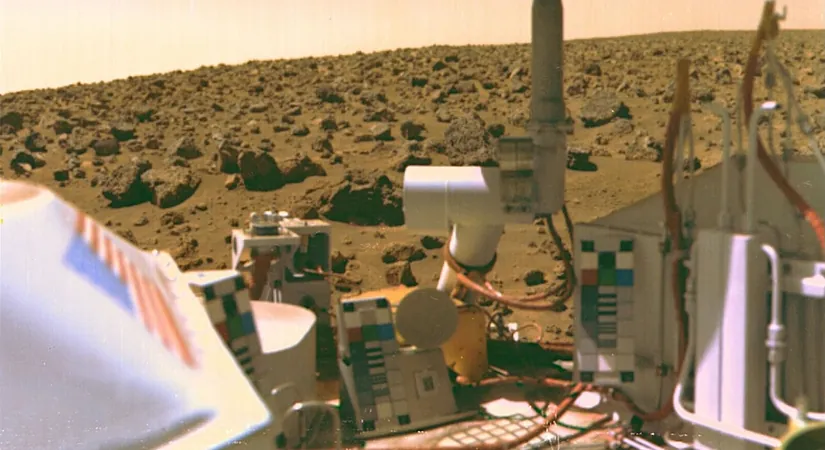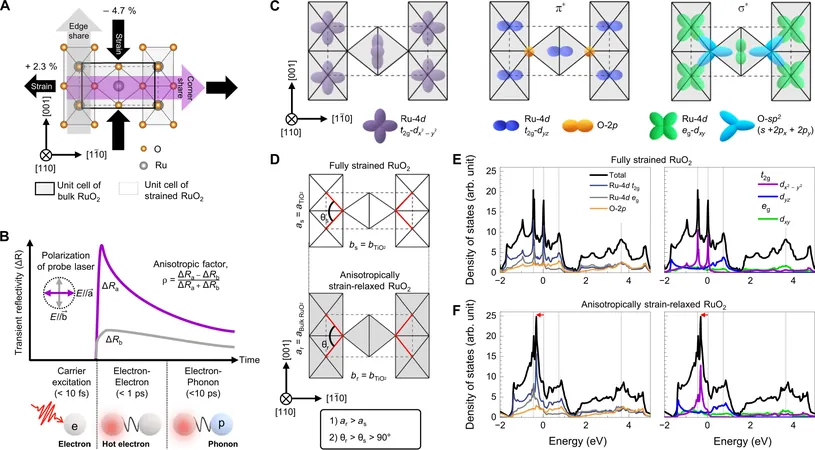
Could Mars Harbor Hidden Life? The Shocking Discovery of Liquid Brines!
2025-07-17
Author: Yu
Forget everything you thought you knew about the Red Planet! While scientists once believed that Mars was a barren wasteland, a recent breakthrough suggests otherwise. New research has uncovered tantalizing evidence that liquid brines—salty liquids that can exist at lower temperatures—might actually form on its surface, offering a glimmer of hope for potential habitability!
The Pursuit of Liquid Water on Mars
For years, scientists have grappled with the mystery of liquid water on Mars, a crucial ingredient for life. The extreme cold and arid conditions typically lead to the conclusion that water—especially in liquid form—could not exist. However, Vincent Chevrier, a dedicated researcher from the University of Arkansas, believes he has cracked the code after two decades of investigation! His findings recently appeared in the prestigious journal, Nature Communications Earth and Environment.
A Game-Changer: Frost Melting into Brine!
Using precious meteorological data collected from the Viking 2 mission in 1976, Chevrier employed advanced computer modeling to make a stunning revelation: brines can form on Mars during the transitional phases of late winter and early spring, specifically when frost melts. This eye-opening discovery challenges the notion that Mars is devoid of liquid water and implies that similar processes could be unfolding in other frost-prone regions across the planet.
The Viking 2 Breakthrough and Sublimation Dilemma
Viking 2 stands out as the only mission to have thoroughly identified and characterized frost on Mars—this crucial data was Chevrier's jumping-off point. However, there's a twist: the frost quickly sublimates, transforming directly from solid to gas, bypassing its liquid state due to Mars' unique atmosphere. But by analyzing this data alongside the Mars Climate Database, Chevrier found a narrow time-frame when conditions were optimal for brine formation—specifically during early morning and late afternoon on two separate occasions each day for one Martian month.
Why Perchlorates are Key!
Mars is rich in salts, and Chevrier has long posited that perchlorates could be the key players in creating brines. These compounds melt at astonishingly low temperatures. For instance, calcium perchlorate remains liquid down to minus 75 degrees Celsius, which intriguingly fits within the typical Martian temperature range. Chevrier's modeling suggests that there are specific times of day—twice daily—when the temperature aligns perfectly for brines to manifest.
A World of Possibilities for the Future
While Chevrier's findings don’t serve as definitive proof of brines, they present a compelling argument for their existence in small quantities. Even potential discoveries by future missions may reveal limited amounts of brine, insufficient to support human life. However, could Mars have once nurtured life forms capable of adapting to such extreme conditions? Chevrier remains optimistic about the implications of his findings.
A Call to Action for Future Exploration!
Chevrier's research highlights crucial periods for potential transient water activity, suggesting specific windows of time that could greatly aid future explorations for extraterrestrial life. He advocates for robotic landers equipped with advanced sensors to take advantage of these seasonal opportunities, aiming to detect brine formation and understand how long these liquids could last.
Stay tuned—Mars isn't just a barren rock anymore. Could it be a frozen oasis in disguise? The quest for understanding this enigmatic planet continues!


 Brasil (PT)
Brasil (PT)
 Canada (EN)
Canada (EN)
 Chile (ES)
Chile (ES)
 Česko (CS)
Česko (CS)
 대한민국 (KO)
대한민국 (KO)
 España (ES)
España (ES)
 France (FR)
France (FR)
 Hong Kong (EN)
Hong Kong (EN)
 Italia (IT)
Italia (IT)
 日本 (JA)
日本 (JA)
 Magyarország (HU)
Magyarország (HU)
 Norge (NO)
Norge (NO)
 Polska (PL)
Polska (PL)
 Schweiz (DE)
Schweiz (DE)
 Singapore (EN)
Singapore (EN)
 Sverige (SV)
Sverige (SV)
 Suomi (FI)
Suomi (FI)
 Türkiye (TR)
Türkiye (TR)
 الإمارات العربية المتحدة (AR)
الإمارات العربية المتحدة (AR)